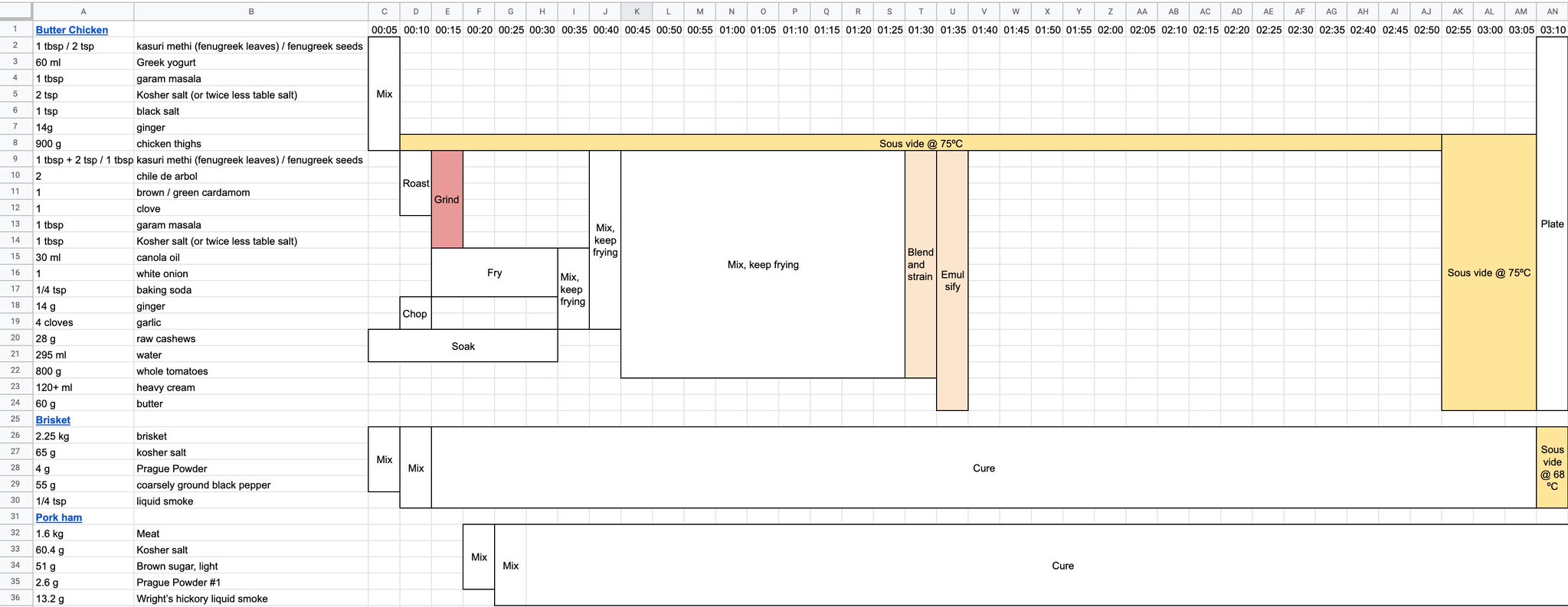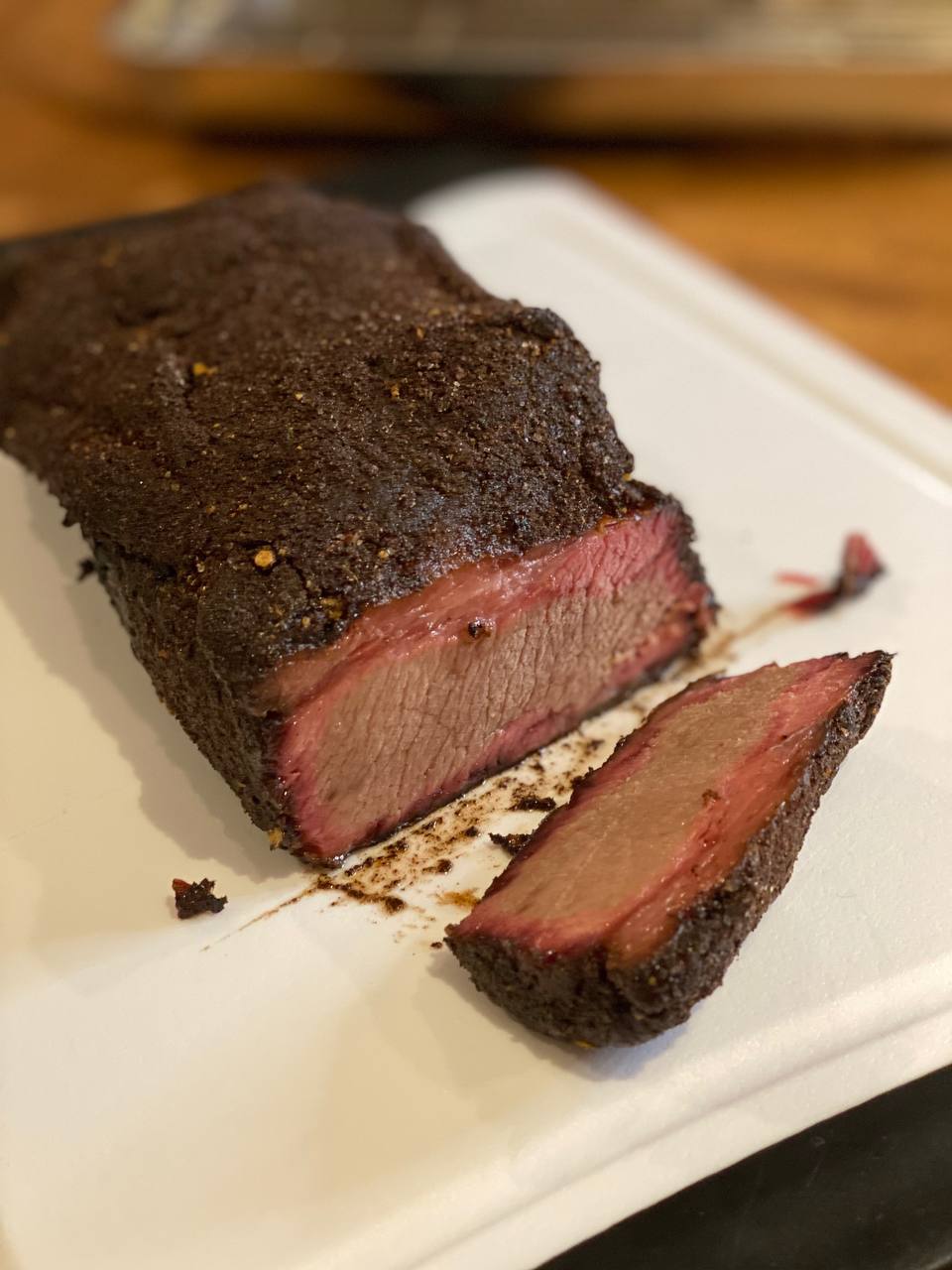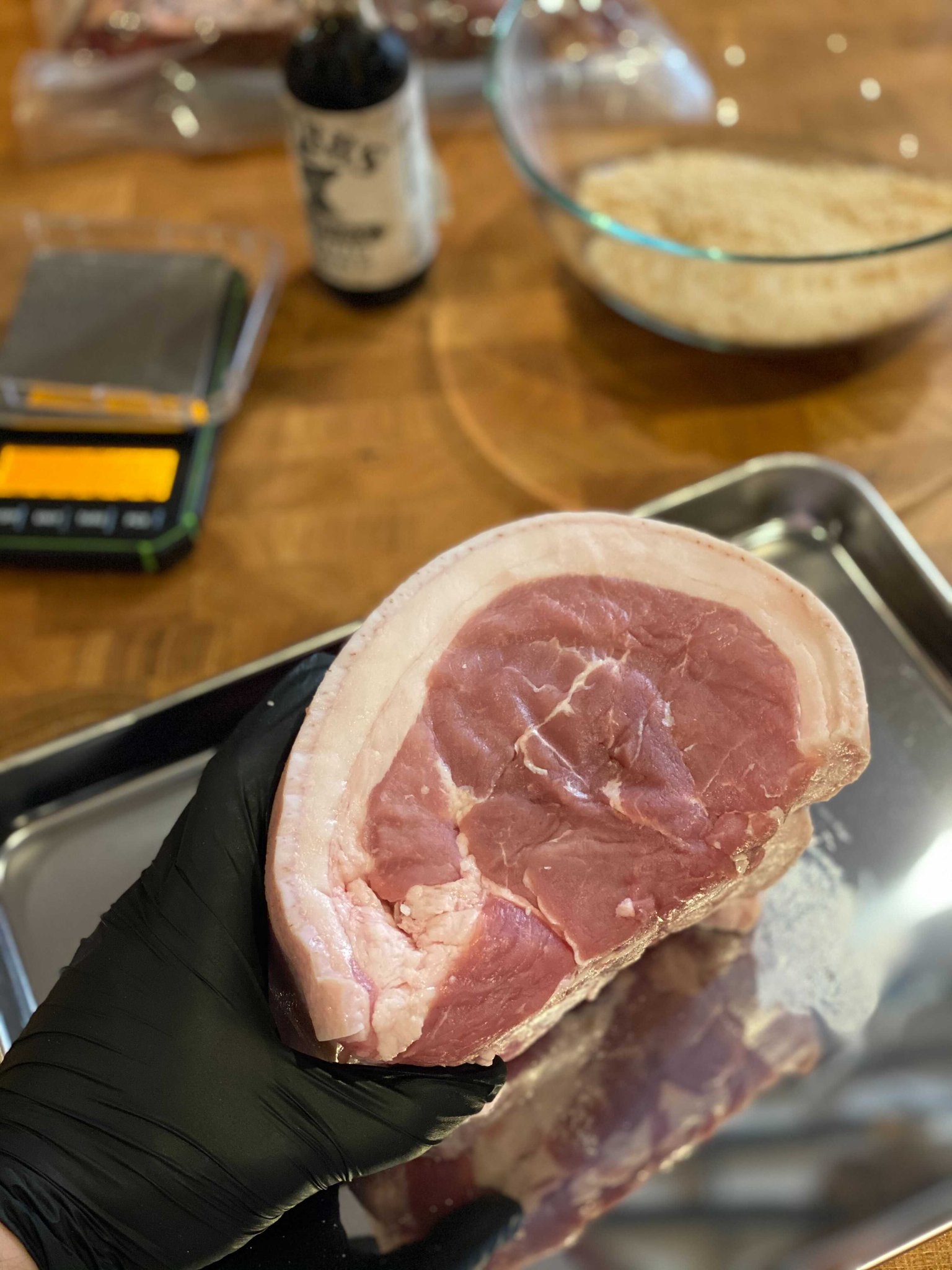Tuesday Triage #28
- TUESDAY TRIAGE #28 by Vadim Drobinin
- On modern recipes
- Things I enjoyed reading
- 1. Why I’ve tracked every single piece of clothing I’ve worn for three years by Olof Hoverfält
- 2. Not Yet by @mattgemmell
- 3. iOS Privacy: Detect when an iOS user hits the Safari share button by @KrauseFx
- 4. The Year of Grinding Teeth by Madeleine Watts
- 5. Greens: why we eat the leaves that we do by @jldosnas
- 6. 365 days or 1 year? Smaller units are more credible by Thomas McKinlay
- 7. Model Graciousness by Visible Child
- 8. The People the Suburbs Were Built for Are Gone by @shayla__love
- 9. How hard should I push myself? by Dan Shipper
- 10. Have We Already Been Visited by Aliens? by @ElizKolbert
- Things I didn't know last Tuesday
- 1. Viking style
- 2. Pocahontas
- 3. Saint Catherine’s Monastery Library
- 4. Cousin Jack
- 5. Bread Sauce
- 6. "Younger" lungs heal themselves
- 7. Tokyo students have to dye their hair
- 8. Gävle goat
- 9. Overlocker
- 10. Shrek's law
- Book of the week
- Thank you and see you in a week!
TUESDAY TRIAGE #28
by Vadim Drobinin ¶
Your weekly crème de la crème of the Internet is here!
26.01.2021 (read in browser)
On modern recipes ¶
While the state of my health still reminds a rollercoaster with its ups and downs, I got fairly inspired by a few new recipes over the last week.
A highlight of my recent cooking endeavours was using Gantt charts for coordinating prep, sous vide, and resting time to build multiple dishes simultaneously.

I've battle-tested it prior to Sasha's birthday to recreate six dishes from different Michelin-starred chefs and spend as little time on cooking as possible, however the whole point of this exercise is to get a better grasp of the bottle-necks, whether it's a lack of spare sous vide circulators, or clean cutting boards, or hobs.
There is still way more things to fix and automate though, namely a better way to highlight blocking things, or shrink prolonged cooking times (e.g 36h sous vide session), but I am quite happy with it anyway.
It was meant to be my first attempt at smoking a brisket, but the first proper snow in London in three years, and a butcher who rolled it up with a damaged piece both changed my plans.

I end up gluing it back with a transglutaminase (aka the Meat Glue) slurry, which links two amino acids: glutamine and lysine. It doesn't have a taste and is totally safe – same thing is used for perfectly squared turkey ham slices in sandwiches.

However it needs either time or heat to do its magic, so I vacuum-packed it with some dry rub, cured for a few hours, cooked in sous vide for a few days and then baked low and slow with a bit more rub, as well as ground coffee beans.

Worked out quite well, and even got a proper smoked ring, thanks to Sodium Nitrate.
Also had a go at pork ham, which is still in sous vide:

And made a double strained murg makhani:

Probably for the next time I will look into reducing the mess (think cooking food-grade gloves: how do people use them? Washing hands feels way faster and more efficient; I just don't get it).
Things I enjoyed reading ¶
1. Why I’ve tracked every single piece of clothing I’ve worn for three years by Olof Hoverfält ¶
A very well-illustrated post on tracking clothes for years and then figuring out their Cost Per Wear (i.e what's better, expensive but long-term, or cheap but short-term?) and designing a bunch of cool charts.
Their effective cost is roughly the same, which means that walking around in the cheap Mywears is roughly as expensive as walking around in Converses. In this case, money buys quality, at least when measured by durability. It takes about two pairs of Mywears to match one pair of Converses. From a sustainability perspective, I would imagine one pair to be better than two, even though the items may have differing individual footprints.
I never cared much about my wardrobe in the past, and occasionally find a half-decade old photos of myself in the T-shirts I wear today, but there are certain things I would love to track merely to justify their cost.
And maybe predict whatever I need to buy or get rid of. Check out the link, it's a huge work on the edge of technology and precision, so if you've read about my obsession with measuring to manage, you might know how I am excited.
2. Not Yet by @mattgemmell ¶
I've been reading Matt for years, though mostly erring on his technical writing side, so this cutting and personal post was rather unexpected and yet beautiful.
As for myself, I’m… well, I’m continuing. I think that’s the best description. There are nights, and there are days, and there are many different tasks to perform at various points. I’ve found it’s best to keep an extremely local and present perspective. It’s bearable that way.
Every medical staff member we met along the way has asked my wife how she’s doing, not just once but on every occasion they’ve crossed paths with her. She’s spent a lot of time telling them she’s fine. None of them ever did get around to asking me the same question.
Especially given that it came by the time the happy end was pretty much known.
3. iOS Privacy: Detect when an iOS user hits the Safari share button by @KrauseFx ¶
A really neat idea of tracking the "Share" button click by spoofing requests to the Home screen.
[...] growth marketers care a lot about all kinds of data, and this getting some extra context on if certain content is being shared outside their platform is most likely very much in their interest.
This allows the website operator to also guess with good accuracy which content the user hit the share button for, by looking up the most recent page they opened up.
As a user, I probably would be mildly concerned by that; however as a developer it brings a great opportunity to better refine content (I'd love to know which pages of my website are shared more often than others).
4. The Year of Grinding Teeth by Madeleine Watts ¶
A rather grim story of teeth importance and one's ability to estimate stress levels by looking at their state.
Every day of our childhoods is fossilized during tooth formation, leaving information about our diet and traumatic life events, as detailed as tree rings. In our early twenties the growing stops, and from that point our lives can be read through the damage—the cavities, the wear from eating and biting, the changes to plaque, cementum, the receding gums. Acidic air can make teeth erode, heavy metals like cadmium and lead that leach into drinking water and food supplies and get into the structures of the body.
All my Wisdom teeth are still there to come, so I am pretty much bracing myself indefinitely for that day. Drop me a DM if you know a decent dental insurance in London, just saying.
5. Greens: why we eat the leaves that we do by @jldosnas ¶
Did you ever think of why some leaves are edible and some are not? Is there a way to measure it and – you got it – manage expectations accordingly or understand a bit more about the way greens evolved over years?
Leaf tenderness—reducing LMA–is certainly a trait that has undergone selection in cultivated varieties. In species with varietals that have undergone selection on different structures, the varieties in which selection has been directed at the leaves invariably have more tender, less bitter, and larger leaves than do varieties in which selection has been directed at different structures, such as the roots. For example, chard has larger and more tender greens than do beets (both Beta vulgaris, Caryophyllales); celery grown for stalks and leaves is more tender than the aboveground portion of the celery varietal grown for its root (both Apium graveolens, Apiales); and Siberian kale varieties have more tender leaves than do rutabaga varieties (both Brassica napus, Brassicales).
My years in bioengineering were mostly focused on engineering rather than bio, but it is really interesting to observe how different plants get aligned and then backtraced to the same tree.
6. 365 days or 1 year? Smaller units are more credible by Thomas McKinlay ¶
Something I always felt, but never could summarise in a sentence:
If you want your statement or estimate to be perceived as more credible, use a smaller unit (e.g. the battery lasts ‘180 minutes’ vs ‘3 hours’, we’ll deliver the project in ‘96 hours’ vs ‘4 days’). People will be more likely to choose your product or service over a similar one that is less credible.
The only issue on the development side of things is a constant confusion between hours and working hours and human hours. Delivering something in 4 days is independent from a team's size, while 96 hours for a team of twelve engineers might be by the end of the same day.
7. Model Graciousness by Visible Child ¶
Despite being quite far from research parenting question, this one caught my attention, mostly because it applies not only to children but pretty much to anyone out there.
Basically the idea is not to force someone to do something, or simply encourage them, it is to do something instead of them implying that you expect the next time to be different.
It means that you demonstrate and model for them the authentic spirit and intention that you wish for them to possess. If you want them to be generous, be generous (yes, of spirit, not just with “things.”) If you want them to be helpful, be helpful. If you want them to help without being asked, help without being asked. If you want them to speak softly, speak softly. If you want them to say thank you, say thank you. Always without resentment—because I presume that you don’t want children who resent you. You get the idea.
I wonder where is this line between modeling graciousness and raising someone spoiled.
8. The People the Suburbs Were Built for Are Gone by @shayla__love ¶
I haven't been to many suburbs in the States, and the ones I've been to were all pretty much on outskirts of San Francisco, where the border between the city and its outside zone is very blurred.
And British suburbs seem to be very different from the ones here:
Previous mainstays of suburban life are now myths: that the majority of people own their homes; that the suburbs are havens for the middle class; or that the bulk of people are young families who value privacy over urban amenities like communal spaces, walkability, and mixed-use properties.
This mismatch has led to a phenomenon called “suburban retrofitting,” [...]
The main idea of suburbs representing privacy still stays though, both here in the UK and in the USA. Hopefully it doesn't mean that the outcome will be similar too.
9. How hard should I push myself? by Dan Shipper ¶
In the past few months I came to a conclusion that I easily switch into a stress mode. I most likely would do my best not to show it, but it takes its toll anyway.
If you put a human in a room where loud noises are going off, you’ll activate their stress response. If you give the human a button to reduce the volume of the loud noises they’ll be less stressed—regardless of whether they even use the button.
What that means is, just knowing you have the option to reduce stress is enough to make something less stressful—even if you’re not actually controlling the stressors at all.
Seems like the first step is to start increasing the sense of control, and then gradually create outlets for frustration.
10. Have We Already Been Visited by Aliens? by @ElizKolbert ¶
This is a wonderful selection of ideas as to whether we've already been exposed to other forms of life, or probably will never meet them even if they exist.
Loeb proposes that Fermi may be the answer to his own paradox. Humanity has been capable of communicating with other planets, via radio wave, for only the past hundred years or so. Seventy-five years ago, Fermi and his colleagues on the Manhattan Project invented the atomic bomb, and a few years after that Edward Teller, one of Fermi’s companions at the lunch table at Los Alamos, came up with the design for a hydrogen bomb. Thus, not long after humanity became capable of signalling to other planets, it also became capable of wiping itself out. Since the invention of nuclear weapons, we’ve continued to come up with new ways to do ourselves in; these include unchecked climate change and manufactured microbes.
Seems like unless we do something terribly wrong (which we are very well capable of doing), there are all chances to reproduce the scenes from a few sci-fi movies by the end of this century or so.
Things I didn't know last Tuesday ¶
1. Viking style ¶
The idea of all-you-can-eat buffets came to Japan from Sweden https://en.wikipedia.org/wiki/Sm%C3%B6rg%C3%A5sbord (buffet) restaurants, but they couldn't spell the name so named it after a popular movie:
They needed a better word to promote the buffet idea.
At the time, The Vikings (a 1958 film staring Kirk Douglas and Tony Curtis) was in the theaters. Somebody at the hotel saw the movie and got inspired. Viking was a perfect word for buffet style dining. After all, vikings and smörgåsbords are both from Northern Europe. Best of all, it's easy to pronounce in Japanese (baikingu).
So now you know that if you fancy a posh hotel-style breakfast in Japan, it's a "buffet", but a casual all-you-can-eat place is a "viking".
2. Pocahontas ¶
Pocahontas the Disney movie is based upon a real woman's story.
Numerous places, landmarks, and products in the United States have been named after Pocahontas. Her story has been romanticized over the years, with some aspects which are probably fictional. Many of the stories told about her by John Smith have been contested by her documented descendants.

3. Saint Catherine’s Monastery Library ¶
There is a library in Egypt which is operating for the past 1500 years.
The library at Saint Catherine’s Monastery located at the foot of the legendary Mount Sinai, is the oldest continually operating library in the world. The monastery itself is also considered one of the oldest functioning Christian monasteries in the world and it is a UNESCO World Heritage site.

4. Cousin Jack ¶
There is a name for immigrants from Cornwell, UK:
The 'Great Emigration' of the Cornish between around 1815 and the First World War saw what has been termed the 'wholescale scattering' of the Cornish to the new mining frontiers of North and South America, Australia and South Africa. From at least the mid-nineteenth century, these emigrants were known as 'Cousin Jacks' [...]
I didn't know neither about the nickname nor the "Great Emigration". Wow.
5. Bread Sauce ¶
I've been looking up what to do with a rock hard stale bread and came across this traditional British recipe:
A bread sauce is a British warm or cold sauce made with milk, which is thickened with bread crumbs, typically eaten with roast chicken or turkey.
The basic recipe calls for milk and onion with breadcrumbs and butter added as thickeners, seasoned with nutmeg, clove, bay leaf, pepper, and salt.

6. "Younger" lungs heal themselves ¶
A study followed up on a claim that smoking reduces at least ten years of one's lifespan, but this time they also confirmed that quiting way before 40 makes most of that time back:
Current male and female smokers between the ages of 25 to 79 were three times more likely to die prematurely than those who had never smoked at all. Non-smokers were also twice as likely to live to the age of 80 compared to smokers.
The researchers found that people who quit smoking between the ages of 35 to 44 gained nine years back of life, while those who quit between 45 to 54 and 55 to 64 got six years back.
Also that's the first study I've seen which is based not on healthy volunteers but on a general population (8% of whom died from smoking-related caused during this research).
7. Tokyo students have to dye their hair ¶
And here I am, complaining that at my school we were forced to wear some kind of a uniform:
The ostensible reason for the rule is that almost all Japanese people have naturally black hair, and so they’ll only have non-black hair if they’ve chosen to dye it a different color. Such willful, discretionary standing out from the norm is seen as a distraction and/or lack of earnestness according to orthodox Japanese values, and thus counterproductive to the collective student body’s academic development.
8. Gävle goat ¶
So there is this beautiful display every year in Sweden:

But the curious bit is in details:
It has been the subject of repeated arson attacks, and, despite security measures and the nearby presence of a fire station, the goat has been burned to the ground most years since its first appearance in 1966. As of December 2019, the goat has been damaged 37 times.
If you check out its Wikipedia page, there is a lovely table outlining all those times. It was mostly burnt indeed, but sometimes hit by a car or damaged somehow else.
9. Overlocker ¶
I never thought that there are different types of sewing machines:
Basically, an overlocker is a special type of sewing machine. Sometimes it is called a serger. A typical overlocker is designed to join the edges of one or two pieces of cloth with an overcast/overlock stitch and cut off the seam allowance as it sews. Simply put, a serger can sew, overcast, and trim excess seam allowance all in one pass. The overcast it creates locks around the seam to ensure that fabric edges won’t unravel. While its function is more specialized, an overlocker can really speed things up and produces a neat, professional-looking finish.
Apparently some ordinary machines have the overlock stitch built in, but they lack in strength as they never have multiple threads.
10. Shrek's law ¶
This is a good one. Apparently better computers didn't speed up filmaking process, they did quite the opposite:
DreamWorks Animation noticed that every Shrek film took roughly twice the CPU hours than the previous film and thus labeled this trend as "Shrek's law". Similar to "Moore's law" the Shrek's law says, "The CPU render hours needed to complete production on a theatrical sequel will double compared to the amount of time needed on the previous film."
Book of the week ¶
I've been chasing this book for a while; mostly because of its name, but also thanks to very mixed reviews and insane prices for the first editions. From James Hamilton-Paterson's novel Cooking with Fernet Branca:
Put on a clean apron. Choose an aria worthy of the dish, for the chef who cooks without a song on his lips cannot hope to infuse the right carefree improvisatory note into his art.
Today the future looks as bright as the Tuscan sunlight striking mottles from the cliff face visible beyond the kitchen window [..] Today I seem in fine form, melodramatically inspired, carolling away as with my terrible swift sword I chop the washed rhubarb stalks into one-inch lengths before subjecting the defenceless peanuts to the hammer blows of fate.
Soon the bacon and the crushed (but not ground) peanuts are frying in a generous lump of lard from the sampered beet and pomegranates. They are joined in our best iron casserole by the pussy fumé, the tortue marinadée and the rhubarb choppée.
A hilarious book about English snobs, Tuscany, crime, and writers, full of the vibe somehow reminiscent of Peter Stafford-Bow's style I mentioned before, this is also a beautiful collection of recipes too daring to be cooked, namely an ice-cream with garlic and Fernet Branca.
However, it is also about Fernet Branca, the only amaro worthy to be called a fernet, I must say.
The role of fernets in my life is probably a story for another time, but Fernet Branca the company had a huge influence on my growth in mixology, and helped me to build up the bridges with many great bartenders out there, which coincidently involved a plenty of shots, or "handshakes", of the spirit itself.
Even better for the book, as pretty much every important decision in there so far is preceeded by Fernet Branca too.
Helps a lot in building a bridge between a writer and a reader, you know.
Thank you and see you in a week! ¶
If you have any questions, or want to suggest a link for the next newsletter, please drop me a message on Twitter or reply to this email.
Cheers! 🍸